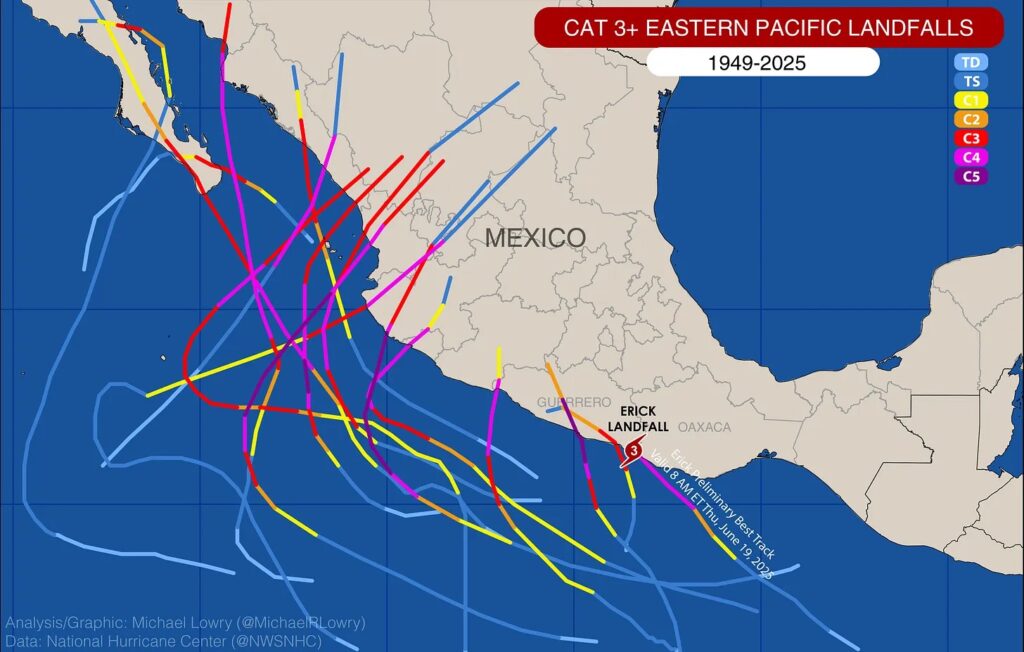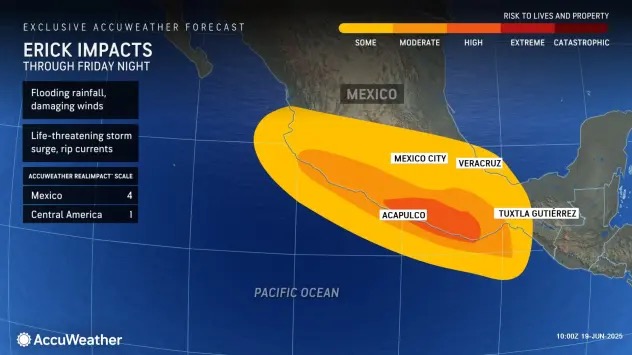Hurricane Erick made landfall on Mexico’s Pacific coast, specifically in western Oaxaca near Punta Maldonado, around 06.00 local time on Thursday 19 June as a Category 3 major hurricane with maximum sustained winds of approximately 125 mph (205 km/h). It is the earliest major hurricane to strike Mexico’s Pacific coast on record, surpassing previous June and July storms.
Erick is the third major hurricane Category 3 or higher to hit this stretch of Mexico’s Pacific coast in less than two years, a region that historically has not seen storms of such intensity. Before Erick, only Category 5 Hurricane Otis in October 2023 and Category 3 Hurricane John in September 2024 had made landfall this far south with similar strength.

in less than 24 hours, Erick rapidly intensified from a 65 mph tropical storm through to briefly reaching Category 4 intensity before making landfall. Such a level of intensification at this time of the year is rare in the eastern North Pacific.
Along with destructive winds, pounding waves, and a life-threatening storm surge, up to 16 inches (405 mm) of rain is expected inland over the coming days, posing risks of widespread flooding and mudslides in the Sierra Madre del Sur along Mexico’s Pacific coast.

Erick is expected to weaken rapidly as it moves inland over mountainous terrain and is likely to dissipate by late Thursday or early Friday. Mexican authorities have issued hurricane warnings from Acapulco to Puerto Ángel, closed ports, suspended activities, and set up over 2,000 shelters.
Very much in contrast, the Atlantic remains quiet with no development expected through to end of next week. The combination of Saharan dust and cooler water temperatures in the deeper ocean have been identified as suppressing factors at the current time. On 11 June, Colorado State University issued an unchanged prediction of an above-average hurricane season following their intial analysis in April with a total of 17 named storms, nine hurricanes, and four major hurricanes forecast. The general consensus among experts is that early activity or a lack of it, is not a good predictor of what might then develop later in the season.